Family : Gobiidae

Text © Giuseppe Mazza

English translation by Mario Beltramini
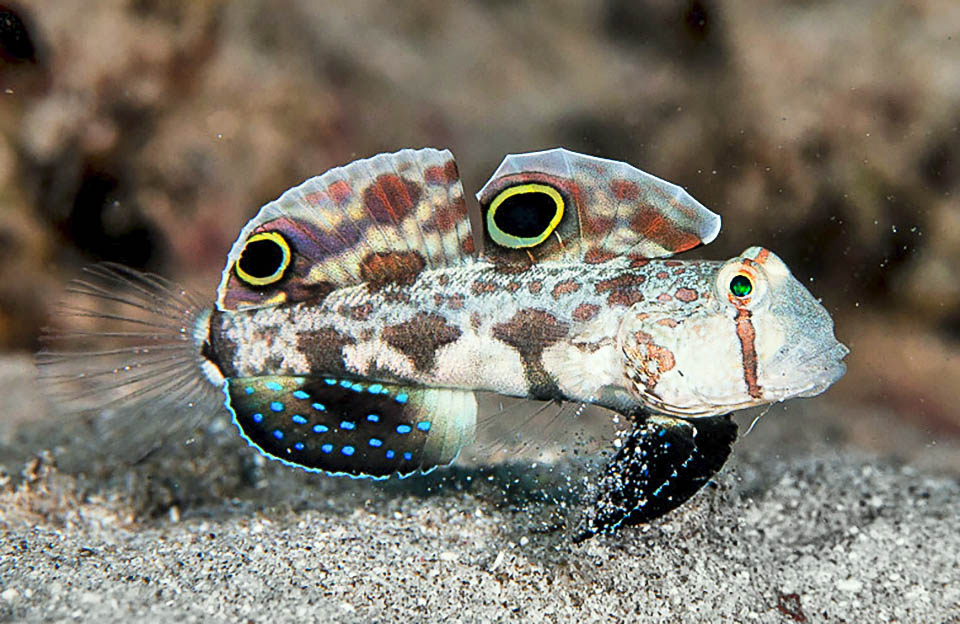
Signigobius biocellatus is a western Pacific odd goby, present from the Philippines islands and the Australian Great Barrier Coral Reef, to Solomon and Vanuatu islands © Tim Cameron
Signigobius biocellatus Hoese & Allen 1977, in English known as “Crab-eyed goby”, belongs to the class of the
Actinopterygii, the ray-finned fish, and to the order of the Gobiiformes, although some scholars prefer to place it in the Perciformes and others in the Cypriniformes, and to family of the Gobiidae, one of the richest in the marine world, as it counts more than 200 genera and almost 2000 species, characterized by the presence of a ventral sucker shaped like cup born from the fusion of the pelvic fins.
Fish mostly found in temperate and warm seas, but with some members also in the fresh and brackish waters.
The name of the genus Signigobius, presently counting only this species, is born, in Latin, by “signus”, mark, and by the genus Gobius due to the unusual repeated ocellated spot like a brand on the two dorsal fins.
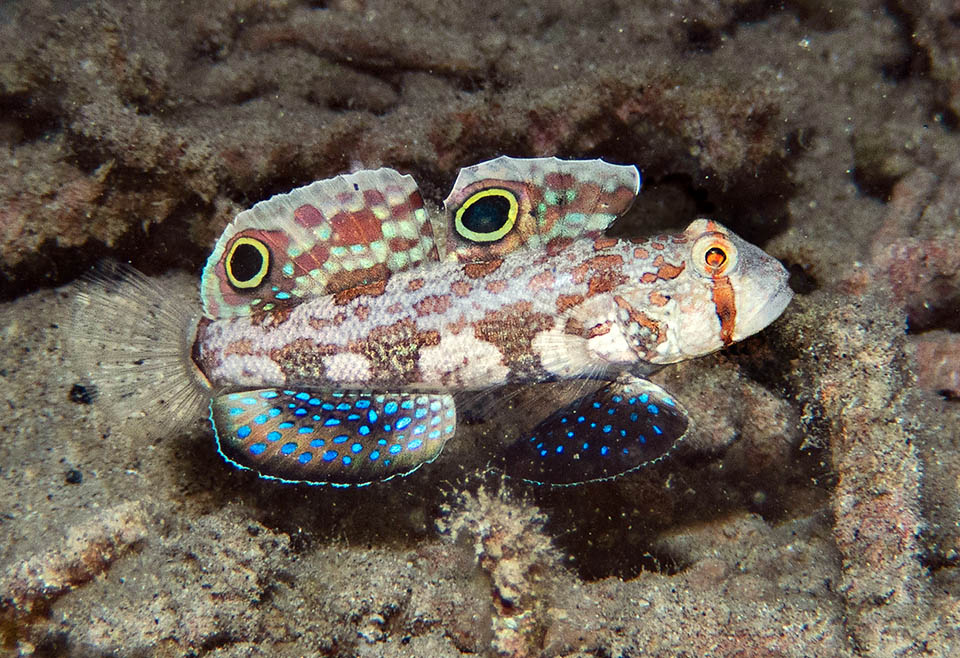
10 cm at most long, it is at once recognized due to the big ocelli present in the two dorsal fins © Kaeli Swift
The specific term biocellatus adds, still in Latin, that these look like two eyes.
Zoogeography
Signigobius biocellatus lives in western Pacific: from Philippines, Palau, Indonesia, Papua New Guinea up to the southern Great Barrier Coral Reef. To the east it reaches Micronesia, Solomon Islands and Vanuatu.
Ecology-Habitat
The Crab-eyed goby is mostly found in pairs, between 1 and 30 m of depth on the sandy or muddy bottoms of lagoons and coastal bays, where it digs dens mainly close to rocks or to madreporic residues.
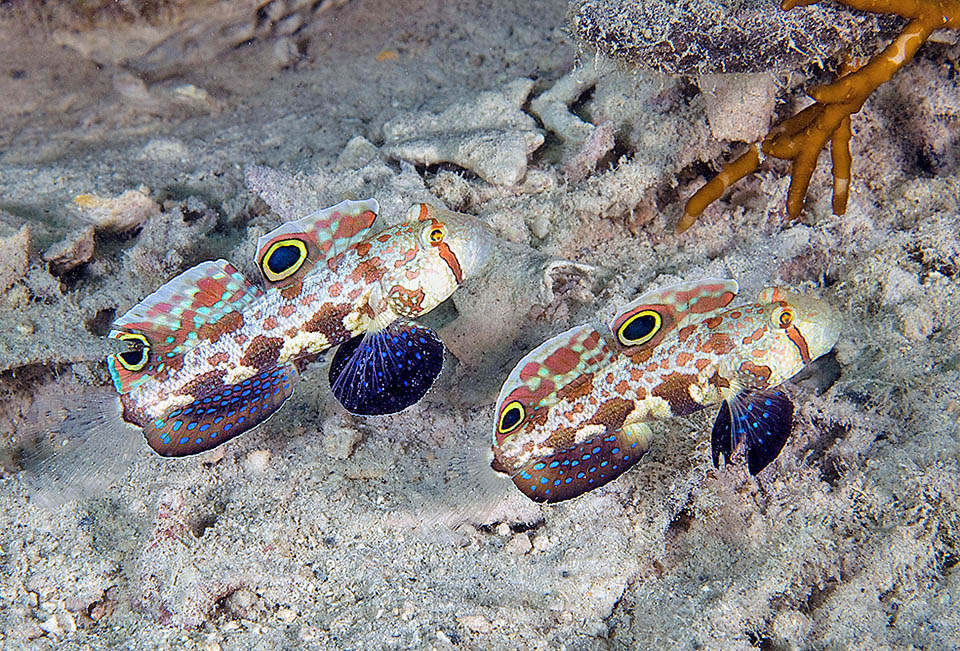
Adults live in pairs, between 1 and 30 m of depth, on sandy or silty bottoms, and live in the same den mainly dug close to rocks or madreporic residues © Terence Zahner
Morphophysiology
Signigobius biocellatus reaches a maximum length of 10 cm.
The two showy dorsal fins have as a whole 7 spiny rays and 10-11 soft. The anal 1 spiny ray and 10-11 unarmed and the pectorals 20-22 rays.
The caudal, translucent, is rounded, and the characteristic cup-shaped sucker, born from the pelvic fins, appears, as the anal fin, dark with elegant turquoise blue spots.
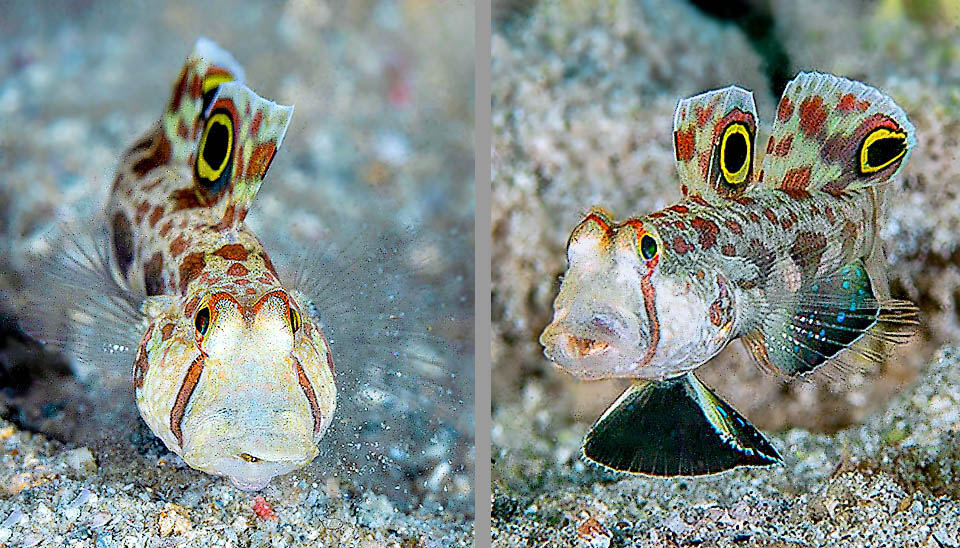
Here left a Crab-eyed goby while sifting the sandy bottoms looking for copepods, nematodes, foraminifera, ostracods and small debris. Right, is well visible the characteristic cup-shaped adhesive disc typical of the Gobiidae, born from the fusion of the pelvic fins © pincetczy (left) and © Tim Cameron (right)
The body, fusiform, is mainly protected by ctenoid scales that become cycloid ventrally and towards the head starting from the base of the pectorals and under the first dorsal fin.
The eyes, placed above on the scaleless head, are relatively small, camouflaged by a brown vertical bar while standing out, to distract the predators, the two big black ocelli present on the dorsal fins. They are circled in yellow, in black and finally in brown, the same colour used for camouflaging with spots and saddles the grey whitish background livery of the fish.
Ethology-Reproductive Biology
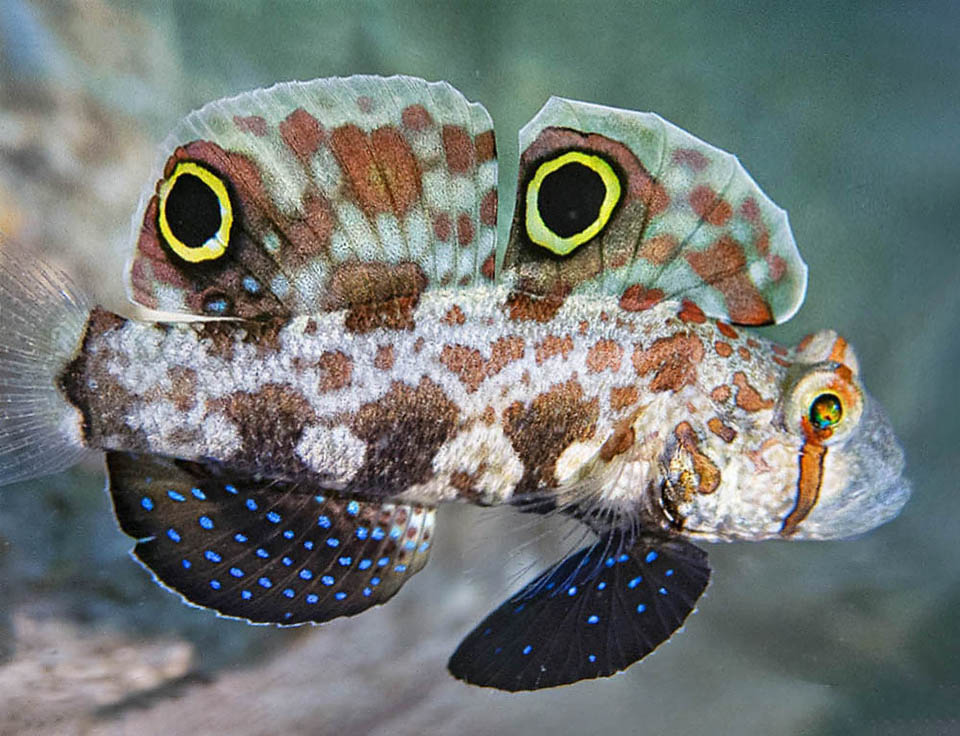
Signigobius biocellatus is often preyed upon by the voracious Lizardfish (Synodus spp.). In this case it stands to one side head down stretching the fins to maximum. The predator then sees slipping away the head of a fictitious fish much bigger than him, with huge menacing eyes and scared changes mind often giving up the meal © tygeronix
Signigobius biocellatus feeds on small invertebrates sifting through the sand it expels then from the gills with a cloud of dust. It mainly holds copepods, but also nematodes, foraminifera, ostracods and small debris.
The main threat to this species are the lizardfish (Synodus spp.). In front of these, the goby stands to one side with the head down and the dorsal fins spread out to deceive the predator who suddenly sees slipping away the head of a fictitious fish bigger than him.
Signigobius biocellatus can swim forward or backward, often in leaps, and probably due to this funny and strange way of moving, no less unusual than its appearance, is very much appreciated by the aquarists.
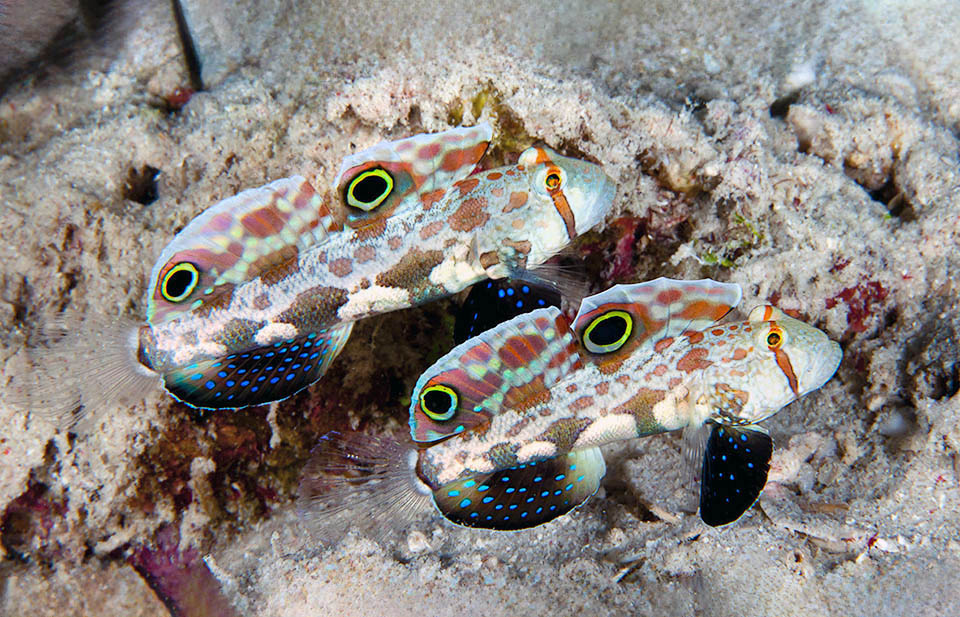
The eggs hatch in the mating den and even if often seized for the domestic aquaria it is not an endangered species © Wayne and Pam Osborn
Due to its size it may be kept also in modest sized pools where it does not disturb the other guests and may be easily fed with larvae of Artemia salina, shrimps of the genus Mysis and fragments of squids or finely chopped fish.
The eggs are laid in the den dug by the parents and the resilience of the species is high, with possible doubling of the populations in less than 15 months.
The very low fishing vulnerability marks only 10 on a scale of 100.
Since 2029 Signigobius biocellatus therefore appears as “LC, Least Concern”, in the IUCN Red List of the endangered species.
→ For general information about FISH please click here.
→ For general information about BONY FISH please click here
→ For general information about CARTILAGINOUS FISH please click here.
→ To appreciate the BIODIVERSITY of BONY FISH please click here.
→ To appreciate the BIODIVERSITY of CARTILAGINOUS FISH please click here.
